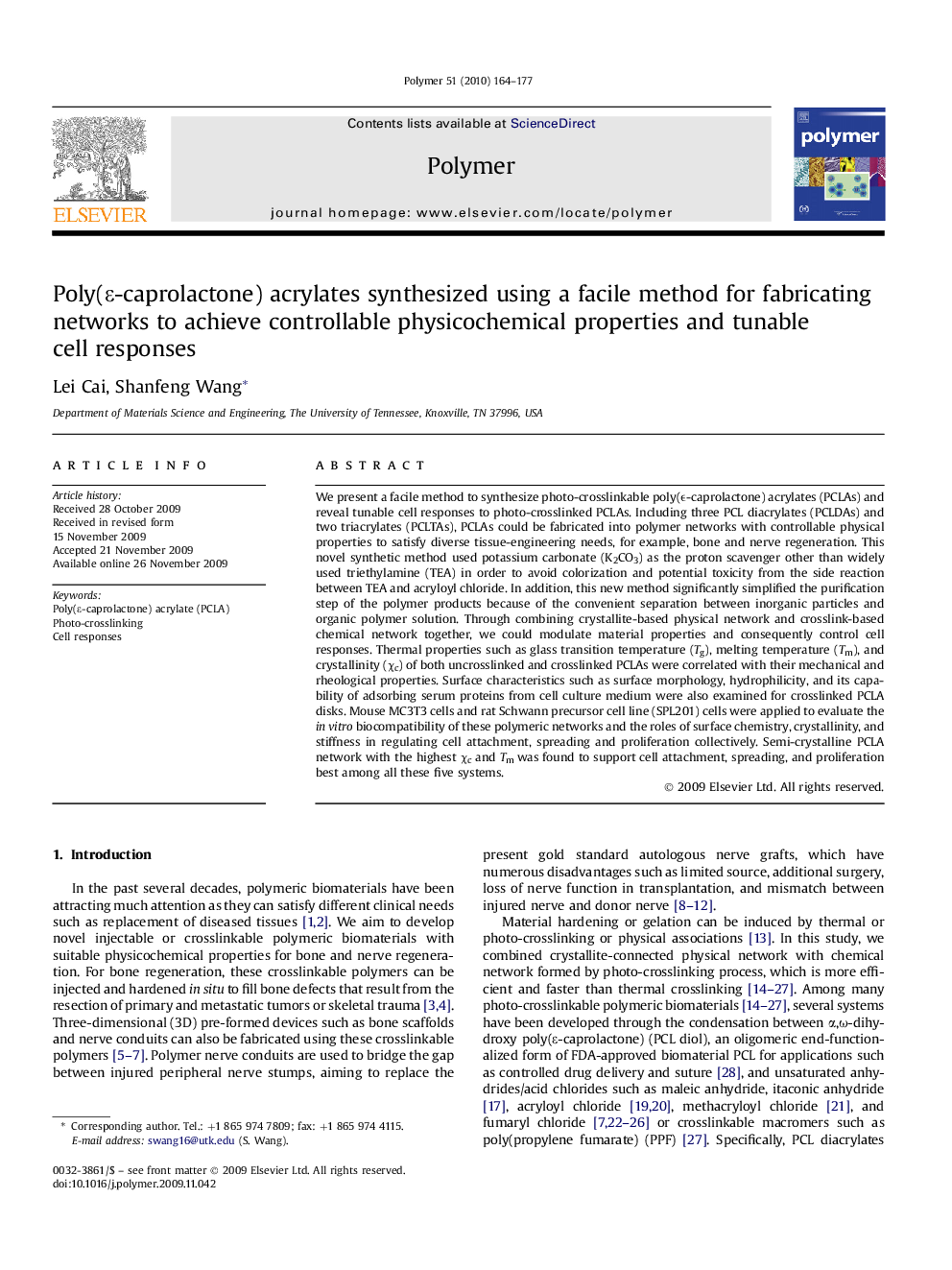| کد مقاله | کد نشریه | سال انتشار | مقاله انگلیسی | نسخه تمام متن |
|---|---|---|---|---|
| 5186952 | 1381117 | 2010 | 14 صفحه PDF | دانلود رایگان |

We present a facile method to synthesize photo-crosslinkable poly(ε-caprolactone) acrylates (PCLAs) and reveal tunable cell responses to photo-crosslinked PCLAs. Including three PCL diacrylates (PCLDAs) and two triacrylates (PCLTAs), PCLAs could be fabricated into polymer networks with controllable physical properties to satisfy diverse tissue-engineering needs, for example, bone and nerve regeneration. This novel synthetic method used potassium carbonate (K2CO3) as the proton scavenger other than widely used triethylamine (TEA) in order to avoid colorization and potential toxicity from the side reaction between TEA and acryloyl chloride. In addition, this new method significantly simplified the purification step of the polymer products because of the convenient separation between inorganic particles and organic polymer solution. Through combining crystallite-based physical network and crosslink-based chemical network together, we could modulate material properties and consequently control cell responses. Thermal properties such as glass transition temperature (Tg), melting temperature (Tm), and crystallinity (Ïc) of both uncrosslinked and crosslinked PCLAs were correlated with their mechanical and rheological properties. Surface characteristics such as surface morphology, hydrophilicity, and its capability of adsorbing serum proteins from cell culture medium were also examined for crosslinked PCLA disks. Mouse MC3T3 cells and rat Schwann precursor cell line (SPL201) cells were applied to evaluate the in vitro biocompatibility of these polymeric networks and the roles of surface chemistry, crystallinity, and stiffness in regulating cell attachment, spreading and proliferation collectively. Semi-crystalline PCLA network with the highest Ïc and Tm was found to support cell attachment, spreading, and proliferation best among all these five systems.
Journal: Polymer - Volume 51, Issue 1, 6 January 2010, Pages 164-177